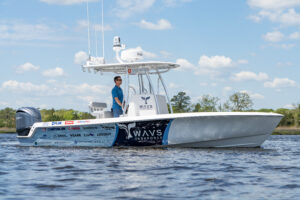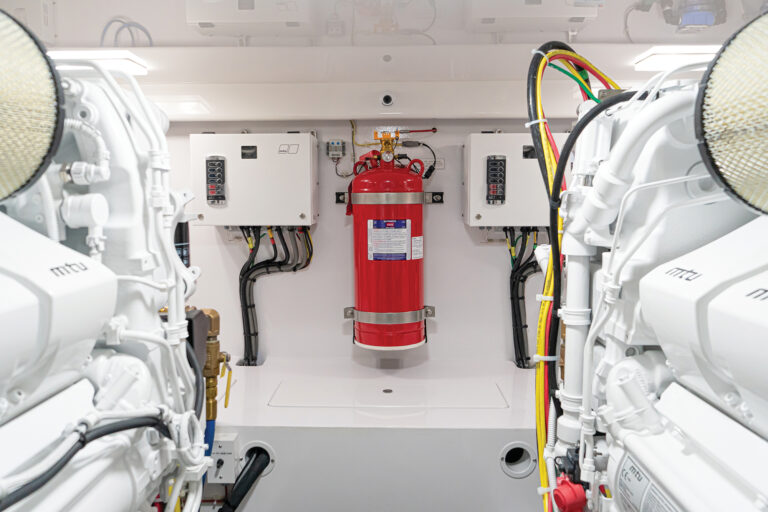The chilling phrase, “You have to go out, but you don’t have to come back,” is the little-known motto of the United States Life-Saving Service, which would eventually evolve into the United States Coast Guard.
The chilling phrase, “You have to go out, but you don’t have to come back,” is the little-known motto of the United States Life-Saving Service, which would eventually evolve into the United States Coast Guard. With its series of new exhibits, The Nantucket Shipwreck and Life-Saving Museum, on Nantucket Island, Mass., tells the story of those who stood by this credo and risked their lives for others.
The museum, formerly known as The Nantucket Life-Saving Museum, was slated to reopen its doors July 1, celebrating its 40th anniversary with a $3 million renovation.
“It is entirely different, but old ‘friends’ will still be there, such as photographs that are meaningful to our visitors and the story of the role lighthouses played,” says executive director Jean Grimmer. “We have it arranged in such a fashion that it is very easy to enjoy our artifacts in a much more organized way that tells the story of extraordinary heroism.”
Jeremy Slavitz, director of education, says the story of what the museum was trying to tell was harder to discern to the casual visitor and more tailored to aficionados.
“This project gave us the opportunity to take a fresh look at our story,” says Slavitz. “Our museum, like many, grows by accretion … as more and more things were added, the elements of our core storyline were diluted.”
The museum currently has more than 5,000 historical objects. To help out, the museum hired Stephanie Muscat, CEO and founder of Artes Scribendi, a company based in Ipswich, Mass., that specializes in renovating and creating exhibits as well as restoring historic collections.
Muscat and Slavitz worked together to create a new look that would effectively tell the story, but retain the elements of what was important to the original museum.
“It is really about the heroic tale of men and women who risked their lives to save others,” says Muscat. “It was very important to revolve around that.”
Slavitz began as curator for the museum in 2001 and found working with Muscat to be rewarding because of her enthusiasm and her willingness to learn about the topic. Muscat and her company also cleaned and restored 1,500 of the museum’s photos and digitalized a majority of them.
“We could civilly disagree and hammer out details,” says Slavitz. “One of the best parts about the project is what people will never see — the process.”
Slavitz says he wanted the museum to maintain the same feel it had before, with a more narrative-based presentation that makes clear lifesaving is still very much a part of the present.
“Before, lifesaving was conveyed as a snapshot in one period of time,” says Slavitz. “We have done a much better job at giving people the story that this is much bigger than that, that it still goes on today.”
The biggest change will be the broader focus on the impact of shipwrecks on Nantucket and elsewhere during the early days of America when maritime travel was at its height. One exhibit discusses the 45,000-ton Olympic, the sister ship of the Titanic, striking and sinking the Nantucket Shoals Lightship LV-117 May 16, 1934. Visitors are greeted with a huge blowup display of the front page of the Boston Traveler announcing the horrendous news. Seven of the 11 crewmen on the lighthouse died that day.
“There was an intense amount of learning that I had to do,” says Muscat. “I felt like I had taken a college course on Nantucket shipwrecks, and I feel very enriched. I learned a lot I never knew.”
Grimmer says because many of these tales can be troubling for children, they have Marshall, a Newfoundland dog, to be their guide to the museum. A real part of history, Marshall was the 17th member of a crew rescued by the island’s Surfside Life-Saving Station in 1877. His likeness appears throughout the exhibits to tell a secondary and lighter storyline compared to the more sobering historically accurate depictions.
“We wanted to find a way children could engage with the story without being scared,” says Grimmer. “We just love Marshall, though we don’t know much about him. He tells children a truncated version of how lifesavers go about their business.”
Children also have the opportunity to interact with the exhibits by learning how to tie sailor’s knots and by learning first-hand how lifesavers of old used a “breaches buoy,” a life ring with shorts attached that passengers in distress could climb into. Also, a children’s book titled “Marshall: A Nantucket Sea Rescue,” by Whitney Stewart that comes with a plush Marshall is available at the gift shop for $6.50.
Grimmer says they have raised $1.2 million so far to cover the costs of the project in private donations, and the museum’s board of trustees is actively working to cover the rest of the costs.
“For me, the cool thing is children can come in and see something extraordinary their grandparents did, and they can make that connection,” says Slavitz. “These are people we know, and that makes history come alive.”
For information, call the museum at (508) 228-1885.










